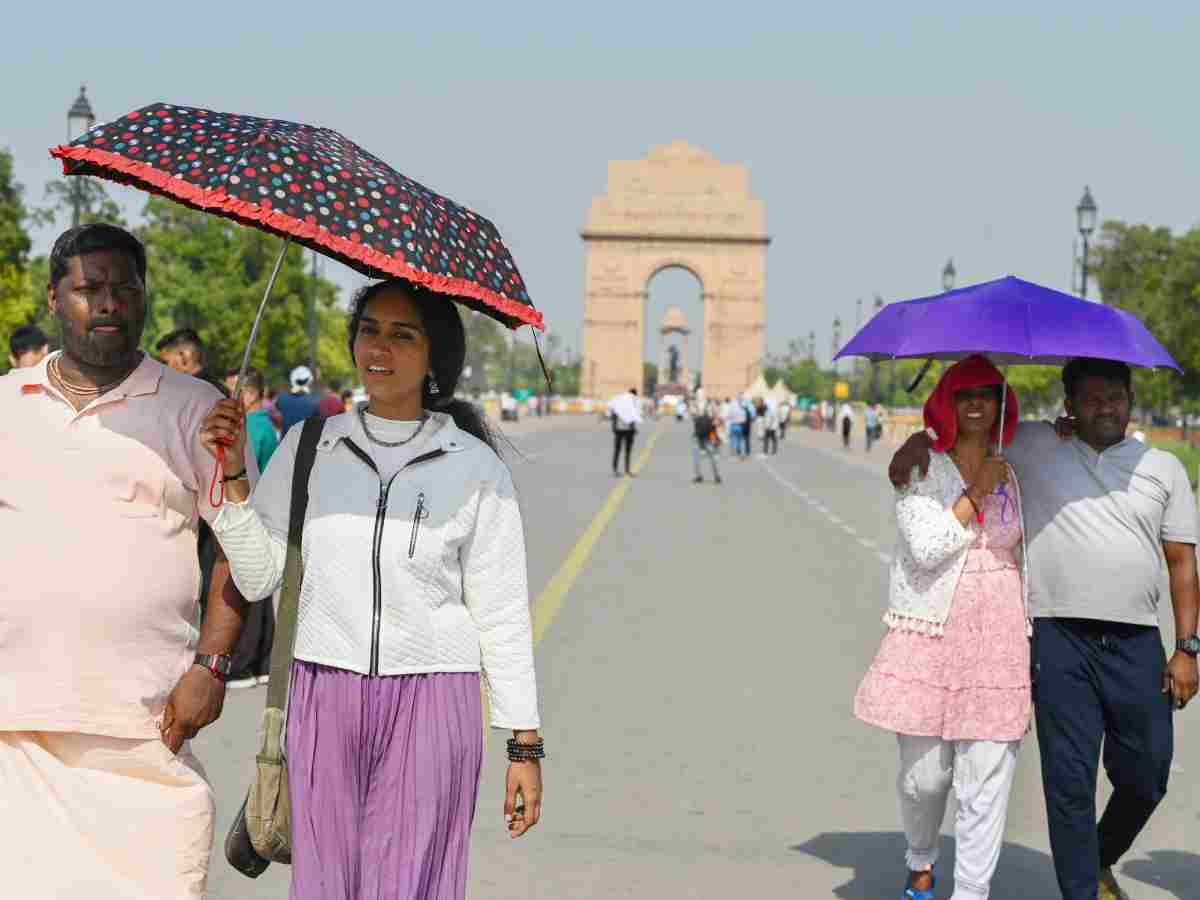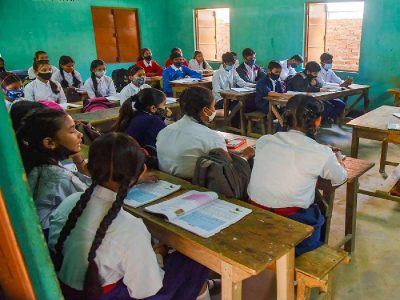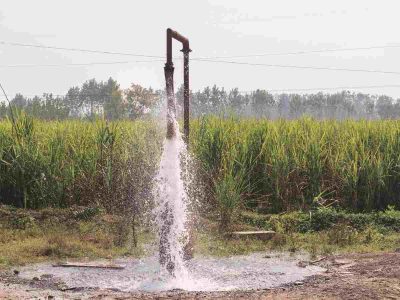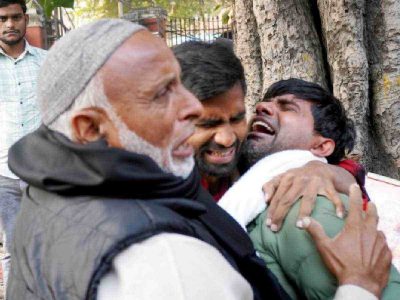Delhi’s top government hospitals are reporting a surge in the number of people seeking medical attention for heat-related illnesses. Scores of individuals have been visiting these facilities, seeking relief from the adverse effects of the scorching temperatures.
Heat-related illnesses, ranging from dehydration and heat exhaustion to more severe conditions like heatstroke, are becoming increasingly prevalent as the city swelters under intense heat.
Dr Ritu Saxena, Deputy Medical Superintendent of Accident and Emergency, Lok Nayak Hospital, told Patriot, “The number of heat-related illness patients have increased in the past few days as a total of 40 patients were received by the hospital this month. Heat-related illness includes dehydration, excessive sweating, rapid heartbeat, dizziness, headache, nausea, and confusion.”
Dr Ritu added, “The temperature is soaring in the national capital and the people should be very careful about their health. Children, senior citizens and people with chronic disease should stay indoor during the peak heat hours – 12 pm to 4 pm”.
Other experts stated that illnesses of patients are getting exacerbated due to the rising temperatures in Delhi.
Dr Seema Wasnik, Head of the Department of Emergency Medicine and In-charge of the Heat Stroke Unit at Ram Manohar Lohia Hospital (RML) Hospital, stated, “So far, no specific cases of heatstroke have been reported. However, the heat is exacerbating existing illnesses among Delhi residents, making situation in the Capital critical.”
She added that on May 22 and 23, a total of 30 patients suffering from high fever, especially due to heat, visited the hospital.
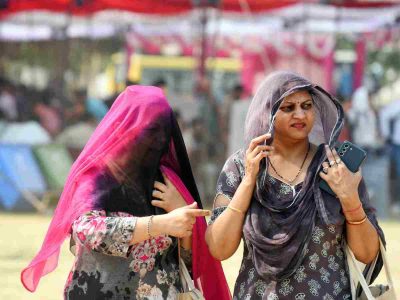
“However, on May 19, the hospital received three patients suffering from various ailments, but their condition worsened due to the heatwave affecting North India. These patients had extremely high fevers of 108, 107, and 106 degrees Fahrenheit. One patient had a liver condition, another had a head injury, among other problems,” she explained.
Ram Manohar Lohia Hospital is run by Central government, while Lok Nayak Hospital is run by Health and Family Welfare Department, Government of Delhi.
Also Read: Delhi heatwave adds to woes of patients at AIIMS
Sharing details of a patient who visited the hospital on May 22, Dr Seema mentioned that a plumber was admitted to the emergency room with very high fever.
“He was diagnosed with malaria, but his fever spiked due to the heat,” she said.
She asserted that heatwave is aggravating the conditions of ill patients, making their condition more critical.
“People should stay indoors during daytime to avoid any health complications,” Dr Seema advised.
The Ministry of Health and Family Welfare (MoHFW) reported a significant number of fresh heatstroke cases and a couple of suspected fatalities on May 22, 2024.
A total of 486 new suspected cases of heatstroke were recorded across various regions in the country on the day.
The two deaths occurred in different locations: one in NTR, Andhra Pradesh, and the other in Kota, Rajasthan.
Looking at the cumulative data since March 1, 2024, the numbers reflect a broader impact of the heat-related health crisis.
Also Read: Delhi burns in heatwave as temperatures skyrocket
The total number of suspected heatstroke cases has reached 16,344. This alarming figure underscores the widespread nature of the issue. The cumulative suspected deaths due to heatstroke now total 28, highlighting the severe threat posed by extreme heat conditions.
Moreover, the number of confirmed heatstroke deaths has risen to 32, indicating the critical nature of timely medical intervention and the importance of public awareness and preparedness to mitigate the impact of extreme heat on health.
Meanwhile, North India’s first state-of-art heatstroke unit has been inaugurated at the RML hospital.
Delhi’s Weather Update
The India Meteorological Department (IMD) reported on May 26 that Delhi’s Safdarjung observatory recorded a maximum temperature of 45.4°C, marking the highest recorded not only for the year but also for the pre-monsoon season.
This significant spike in temperature follows a previous high of 44.4°C recorded on May 19, 2024. Such temperatures, exceeding normal levels by approximately 5°C, signify conditions indicative of a heatwave. In the plains, mercury levels reaching 45°C automatically trigger heatwave conditions, regardless of their departure from the normal range.
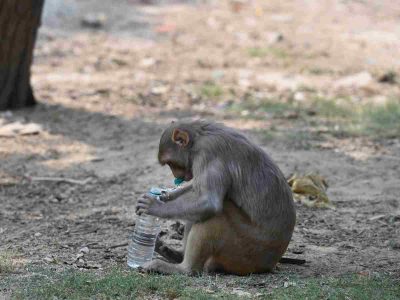
“Delhi has been enduring scorching temperatures exceeding 40°C persistently for the past two weeks. The mercury has surged past the 44°C mark on three occasions during this period. Forecasts indicate that temperatures will continue hovering around 45°C until the end of the month, with the possibility of even reaching 46°C during this timeframe. Such high temperatures are unprecedented, as Delhi has experienced a 46°C reading only once in the last two decades, specifically on May 27, 2020, as recorded by the Safdarjung observatory,” the weather department said.
“This temperature stands as the highest recorded for the month of May in the last 20 years. There’s a possibility that this record may be surpassed within the next two days. The prevailing weather conditions are characterised by intense heat and dryness, with the onset of ‘loo’ conditions, referring to scorching hot winds, particularly in the afternoon hours,” the weather department added.
What is heat-related illness?
Heat-related illnesses encompass a range of conditions that occur when the body’s ability to regulate its temperature is overwhelmed by the environmental heat.
These illnesses can range from mild conditions like heat rash and heat cramps to more severe conditions like heat exhaustion and heatstroke.
Heatstroke is the most severe form of heat-related illness and is a medical emergency that requires immediate attention.
Symptoms of heat-related illnesses can vary but may include dehydration, excessive sweating, rapid heartbeat, dizziness, headache, nausea, and confusion.
In severe cases, heat-related illnesses can lead to organ damage, coma, and even death if not treated promptly.
Preventing heat-related illnesses involves staying hydrated, avoiding prolonged exposure to high temperatures, wearing lightweight and breathable clothing, and taking breaks in shaded or air-conditioned areas when outdoors. It’s also crucial to be mindful of vulnerable populations such as the elderly, children, and individuals with certain medical conditions who may be at higher risk for heat-related illnesses.
Overall, awareness, prevention, and timely intervention are key in mitigating the risks associated with heat-related illnesses and ensuring the well-being of individuals during periods of extreme heat.
What is heatstroke?
Heatstroke is a severe heat-related illness characterised by a significant increase in body temperature, often exceeding 40°C (104°F), due to prolonged exposure to high temperatures or physical exertion in hot environments.
It is considered a medical emergency and requires immediate treatment. Heatstroke occurs when the body’s ability to regulate its temperature fails, leading to a rapid rise in body temperature that overwhelms the body’s internal cooling mechanisms, such as sweating and blood vessel dilation.
Symptoms of heatstroke can include high body temperature, altered mental state or behaviour, hot, dry skin (in classic heatstroke) or moist skin with sweat (in exertional heatstroke), rapid heartbeat, rapid and shallow breathing, nausea, vomiting, headache, dizziness, muscle cramps, weakness, and seizures.
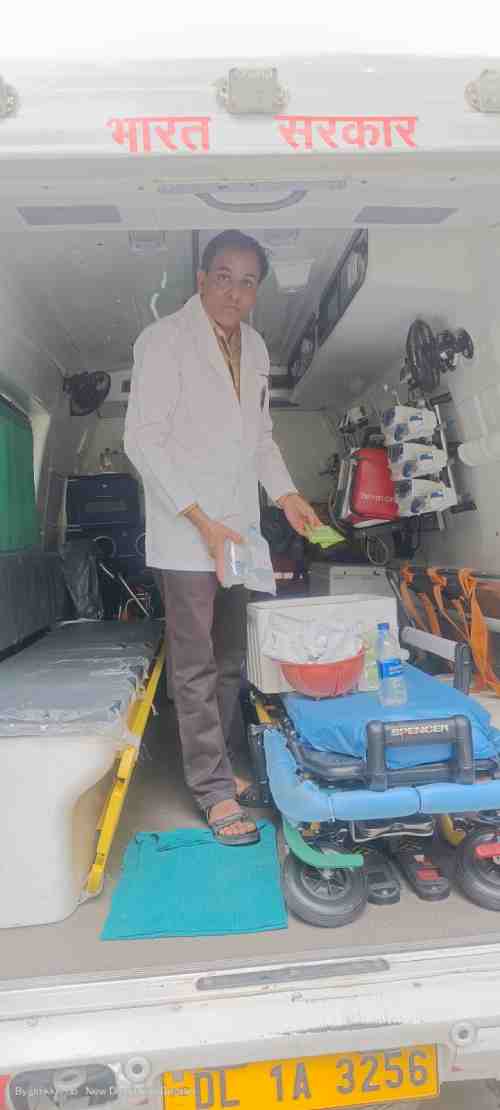
If left untreated, heatstroke can lead to serious complications, including organ failure, brain damage, and death. Immediate medical attention is crucial for treating heatstroke, which may involve cooling measures, such as moving the individual to a cooler environment, removing excess clothing, applying cool water or ice packs to the skin, and providing fluids to rehydrate the body.
Preventive measures, such as staying hydrated, avoiding prolonged exposure to high temperatures, and taking breaks in shaded or air-conditioned areas, are essential for preventing heatstroke.

